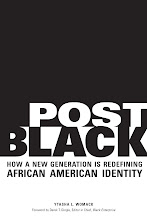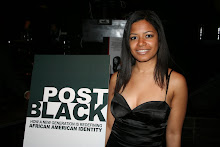Shawn Martinbrough is a comic illustrator for Marvel Comics and former DC Comics illustrator. He's worked on the Batman series and X-Men. His latest project is the 1930s Harlemite and African American superhero Luke Cage. The four part mini series, which is published by Marvel Comics, is written by Mike Benson (Entourage) and Adam Glass (Cold Case). Shawn’s art book How to Draw Noir Comics: The Art and and Technique of Visual Story Telling, which is published by Random House, is used by budding illustrators across the world. A New York City native, Shawn is also featured in Marvelous Color, a show on Marvel's African American superheroes and features original art by artists of color at the Caribbean Cultural Center African Diaspora Institute in New York , 8 W. 58th St. (btn 9th and 10th). http://www.marvelouscolor.com/
YLW: Many comic book fans today don't know about the African American illustrators or writers in the industry. Do you ever think about how mind blowing this is for some people?
SM: It's never lost on me that I'm a black guy illustrating major characters for major companies. Working in the comic book industry is probably the most level playing field you'll experience as an artist. To the editor looking to hire freelance artists, it's all about A). Can you meet your deadlines? and B). Are you good?
YLW: Marvelous Color is a really exciting show. How did it come about?
SW: The curators, Edgardo and Shirley Miranda-Rodriguez wanted to create a show that featured classic African American superheroes such as Luke Cage, Storm, Black Panther and more contemporary heroes like Blade and War Machine (who will be prominently featured in the highly anticipated Iron man 2 in 2010). More importantly, they wanted the exhibit to feature the artists of color who have illustrated these characters. Many of the artists, myself included, created original artwork for the show.
YLW: Tell me about your experience with DC and Marvel Comics?
SM: I got my degree in illustration in 93' from the School of Visual Arts in New York City but I landed my first work for Marvel Comics in 92'. The biggest thing I did for DC Comics was drawing Batman: Detective Comics. I got that job in 99'.
DC editorial wanted to go in a new direction with Batman. Gotham had suffered this massive earthquake, which destroyed the entire city. The plan for the 2000 relaunch was to jump ahead in time with Gotham City starting fresh. They hired myself and other artists to redesign sections of Gotham City. Creating new neighborhoods in Gotham City was an amazing experience. The writer to whom I was paired with was bestselling author Greg Rucka. Working on Detective Comics was fun but the pressure of drawing 22 pages a month can get tight.
Eventually, I moved to Marvel and did one of their limited series for the X Men. Then I was offered work at DC in their licensing division where I illustrated several projects featuring basketball great Lebron James as a super spy. Over the years I bounced back and forth between Marvel and DC and then I was offered an opportunity to create an art instruction book based upon my high contrast art style. How to Draw Noir Comics: The Art and Technique of Visual Storytelling was published by Watson Guptill/Random House in 2007.
YLW: Graphic novels are really popular now. Why do so many become films?
SM: Comic books are seen by Hollywood as very lucrative intellectual properties because you can franchise and more importantly merchandize. As with a novel, it's an adaptation and there's less risk compared to creating a film based on a completely new concept.
Back in the early 90s, when I was growing up in New York there was one main comic convention, the New York Comic Con. Marvel and DC would have booths there. They'd look at portfolios of aspiring artists and promote upcoming projects. It was well attended but it was mostly for comic book fans. Going into the late 90s, the San Diego Comic Con began to grow in popularity and became more prominent. Now, San Diego has been completely taken over by Hollywood. Variety will cover it. Entertainment Tonight will do a feature. That convention is so popular now it's ridiculous.
YLW: Who is the comic book audience?
SM: I think that the majority of comic book buyers are in their thirties and older. These tend to be people who collected comics as kids. Today, comics appeal to some of the youth but they have so many distractions for entertainment now. Also, many video games have completely ripped off comic books conceptually. As a kid consumer you have to ask yourself, will you buy a $28 worth of comic books (which will amount to about 5 books) or a $30 video game that will give you 60 hours of play?
YLW: How has the approach to writing comic books changed over the years?
SM: The writing has become more sophisticated. However, Marvel and DC are recruiting writers from outside the comic book industry for many new projects. They’re approaching Hollywood screenwriters and bestselling novelists to take a stab at writing new books. These are also people with notoriety that the companies hope can help sell their books beyond the comic book base.
YLW: Are there many African Americans in comics?
SM: There are a number of African Americans working in comics but it's such a faceless industry that you don't know who's black and who's not. A lot of people don't know I'm black. I’m been surprised myself to learn that an artist or writer whose work I admire is a person of color.
YLW: What makes a comic "good"?
SM: Since I'm an artist first I have to respond to the art. No matter how well a comic book is written, I can't read it if it has bad art.
YLW: What's the comic making process?
SM: I'm given a script. I draw it out and send the boards to the company. The inker goes over my work. Digitally they send it to a letterer and a colorist. An editor overseas the entire process from start to finish. Finally the completed book is sent to the printer. Typically I draw and ink my own work so I save them a step.
YLW: What's your work day like?
SM: I work from home in my studio. I go to bed around 3 am and wake up at 9am. Sometimes I get stir crazy when I have a tight deadline but I enjoy drawing and telling stories visually so it’s worth it.
For more information view www.shawnmartinbrough.com, www.myspace.com/noircomics
Monday, December 21, 2009
Comic Justice - Interview with Marvel Comics Illustrator Shawn Martinbrough
Subscribe to:
Post Comments (Atom)




Cool interview!
ReplyDeletethis men must be a real artist, when I see any comic draw by this men I see a real master piece, go ahead bro keep this road.
ReplyDeletenice
ReplyDeletethanks for the information on this blog! I find it very interesting and entertaining! hopefully soon have updates that I love your post! I thank you too! clomid generic
ReplyDeleteI would like to thank you for the efforts and also like your post. Today I got some awesome kids coloring book for kisd on amazon. Which books are designed to build kids confidence level and imagination power.
ReplyDeleteSee on amazon:
Kids Coloring Book Collection
Unicorn Coloring Book For Kids Ages 4-8
wild animals coloring book For Kids Ages 4-8
Best kids coloring books For Kids Ages 4-8
A-Z English Coloring Book For Kids Ages 4-8
It's inspiring that Shawn Martinbrough is illustrating major characters for such prominent companies.
ReplyDelete